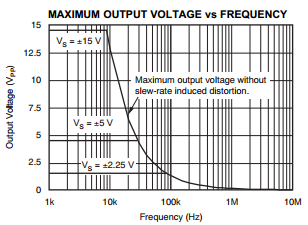I'm wondering if someone can help me why our OPA4188 is showning SR limits of about 80KV/S (0.08V/uSec) instead of the specificaiton of 0.8V/uSec typ?
My circuit is a differential input gain of one using 100K ohm resistors. Circuit is shown below.
The inputs are sinewaves of about 9Vp and 4Vp for an output of about 5Vp. I have captured the positive input and output in the waveforms below.
Does load have any effect on SR limit on this Op Amp?
Thanks,
John Gray





